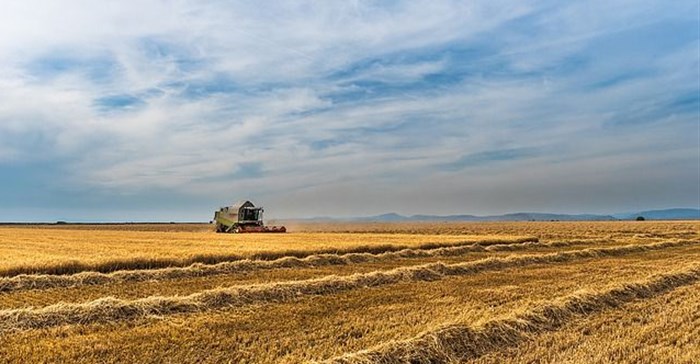FAO director-general, José Graziano da Silva and OECD secretary-general, Angel Gurría write in the Foreword of the report: "Global agriculture has evolved into a highly diverse sector, with operations ranging from small subsistence farms to large multinational holdings."
Along with providing food, they added, today's farmers "are important custodians of the natural environment and have become producers of renewable energy."
The outlook projects that yield improvements and higher production intensity, driven by technological innovation, will result in higher output even as global agricultural land use remains broadly constant. Direct greenhouse gas emissions from agriculture, meanwhile, are expected to grow by some 0.5% annually over the coming decade, below the 0.7% rate of the past 10 years and below the projected output growth rate - indicating declining carbon intensity.
At the same time, new uncertainties are emerging on top of the usual risks facing agriculture. These include disruptions from trade tensions, the spread of crop and animal diseases, growing resistance to antimicrobial substances, regulatory responses to new plant-breeding techniques, and increasingly extreme climatic events. Uncertainties also include evolving dietary preferences in light of health and sustainability issues and policy responses to alarming worldwide trends in obesity.
Population growth, urbanisation and lifestyles
Worldwide, the use of cereals for food is projected to grow by about 150 million tonnes over the outlook period - amounting to a 13% increase - with rice and wheat accounting for the bulk of the expansion. The most significant factor behind the projected growth in food use of staple products is population growth, which is expected to rise fastest in sub-Saharan Africa and South Asia.
"Regrettably, the neediest regions are expected to see slow income growth and hence only small improvements in their nutritional status," warned FAO assistant director-general for economic and social development, Máximo Torero. "The findings point to an overall decline in undernourishment; however, at current rates of improvement, we would remain far off track from reaching the Zero Hunger target by 2030."
"The outlook makes abundantly clear that trade is critical for global food security," said OECD director for trade and agriculture, Ken Ash. "Regions that are experiencing rapid population growth are not necessarily those where food production can be increased sustainably, so it is essential that all governments support open, transparent and predictable agro-food markets."
The report finds that consumption levels of sugar and vegetable oil are projected to rise, reflecting the ongoing trend towards prepared and more processed foods, notably in many rapidly-urbanizing low and middle-income countries. Concerns about health and wellbeing, meanwhile, are likely to nudge numerous higher-income countries towards lower consumption of red meat and a shift from vegetable oils to butter.
In addition, the demand for feed crops is projected to outpace animal production growth in countries where the livestock sector is evolving from traditional to commercialised production systems, while the use of agricultural commodities as feedstock to produce biofuels is expected to grow primarily in the developing countries.
Trade in agricultural and fisheries commodities should expand over the coming decade at around 1.3% annually, slower than over the past decade (3.3% average), as growth in global import demand is expected to slow. On the export side, both Latin America and Europe are projected to increase their sales to foreign markets.











































